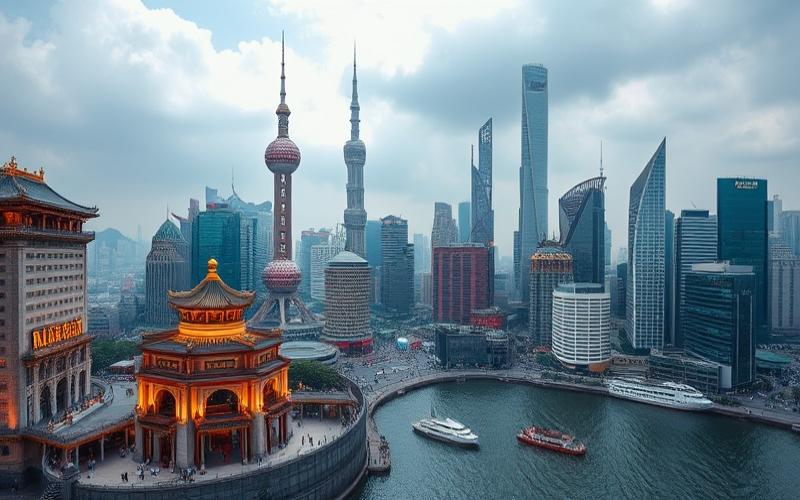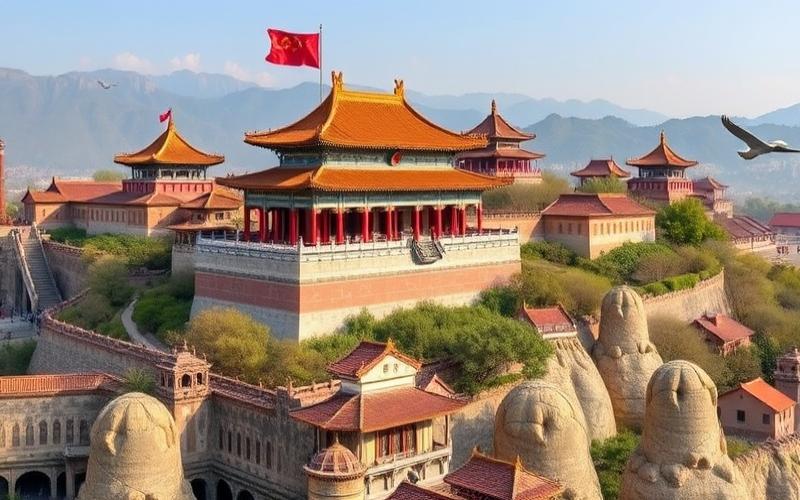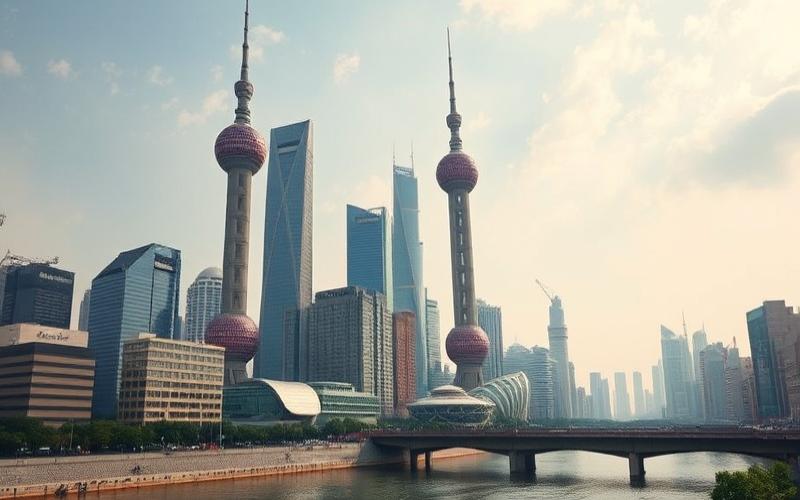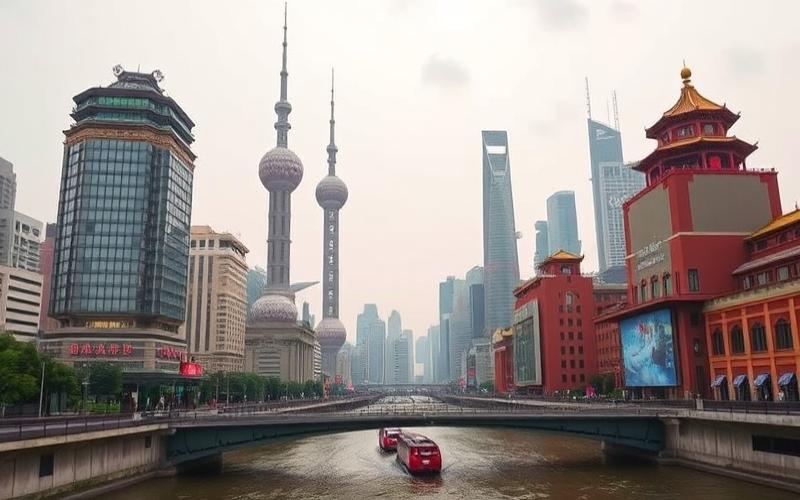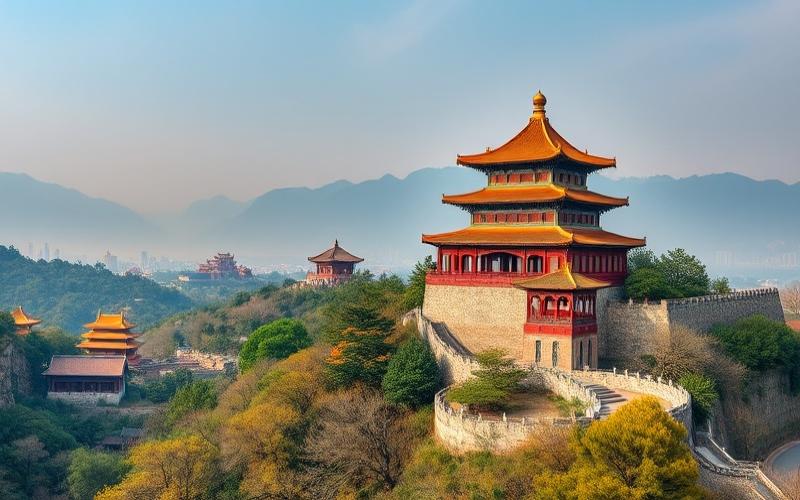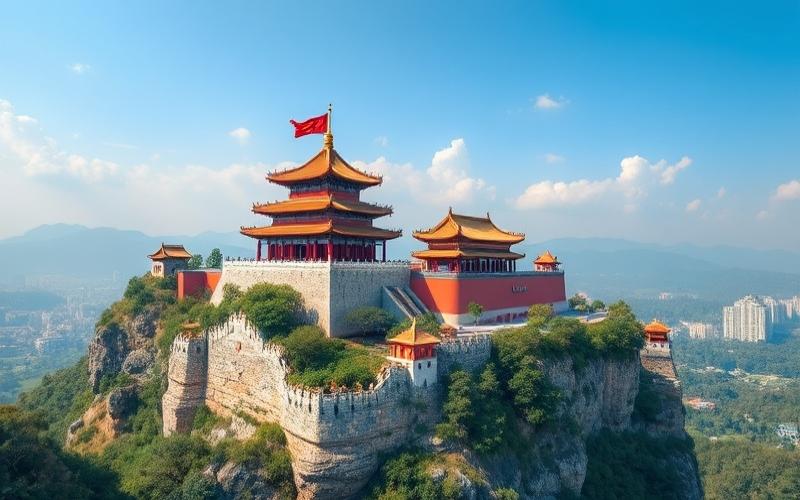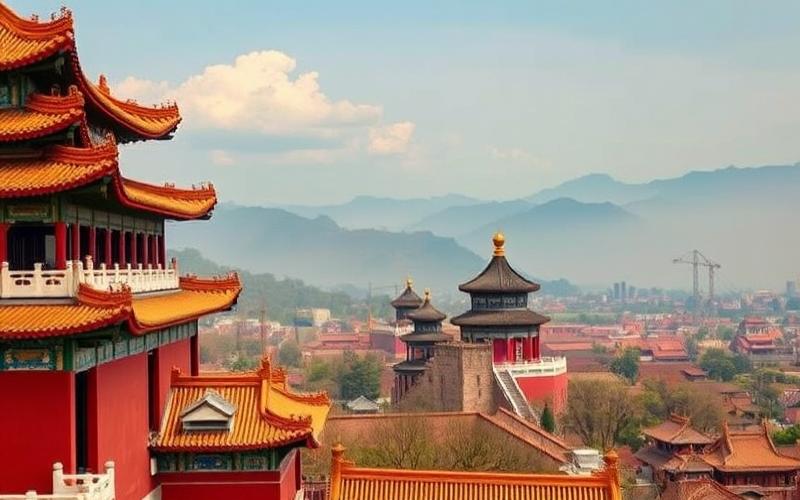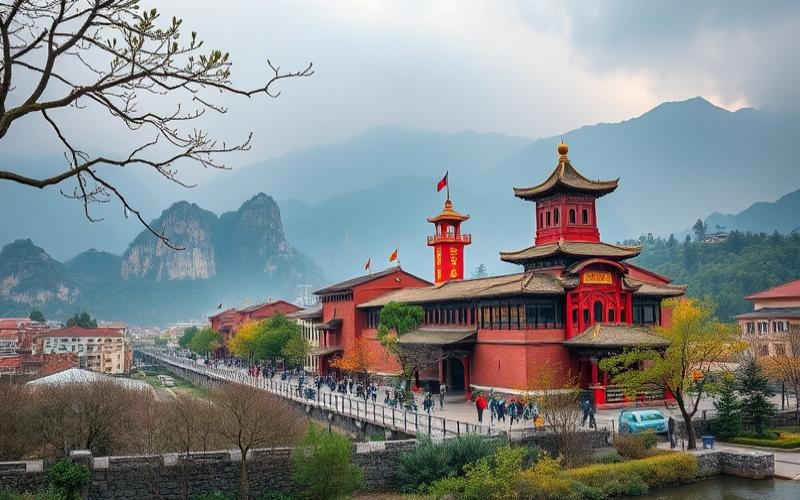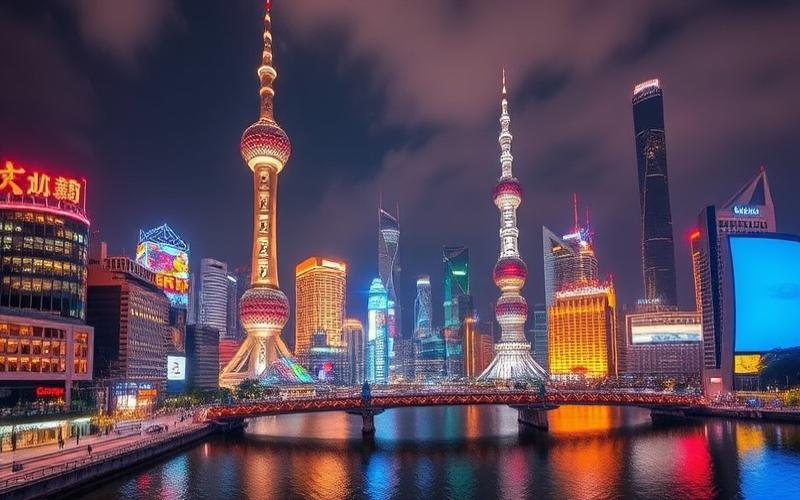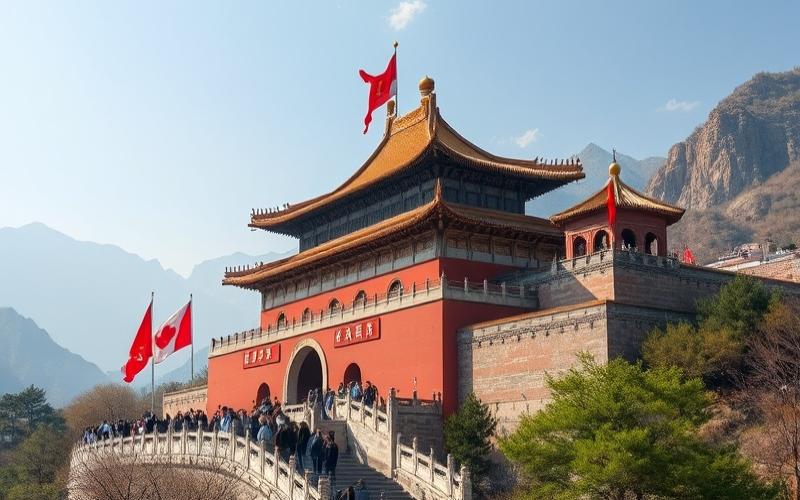
 Published on and written by Cyril Jarnias
Published on and written by Cyril Jarnias
Navigating China’s vast and complex public transportation network can be challenging, yet it offers a fascinating way to explore the country.
By integrating ultra-modern and efficient transport systems like high-speed rail and subways that connect megacities with remote regions, China provides a diverse range of mobility options suited to all needs.
Although options may vary between cities, technological advancements significantly facilitate both daily commutes and tourist travel.
Learning how to smartly utilize these services can radically transform your travel experience in China, allowing you to admire its wonders while immersing yourself in local life.
Exploring China’s Main Transportation Modes
Primary Transportation Modes in China
- High-Speed Trains (HSR): China’s network, with over 40,000 km of modern railway lines, is the world’s most extensive. Fuxing trains connect major cities at speeds up to 350 km/h, offering punctuality, comfort, and efficiency for major intercity travel.
- Subways: Metropolises like Beijing, Shanghai, and Guangzhou feature extensive underground networks covering all urban districts. These systems are modern, clean, and highly frequent during peak hours.
- Buses: Available everywhere from cities to countryside, they serve downtown areas as well as urban and rural peripheries. In urban zones, they’re regular and inexpensive; in rural areas frequency decreases but service remains vital for connecting villages and towns.
- Taxis: Easily accessible in all major cities via mobile apps or dedicated stands. Less available in rural areas where they primarily serve train stations or major routes.
- Bike-Sharing: Massively deployed in recent years through digital platforms (e.g., Mobike). Widely used in urban centers for short trips; availability drops significantly outside major metropolitan areas.
| Mode | Major City Availability | Rural Area Availability | Major City Efficiency | Rural Area Efficiency |
|---|---|---|---|---|
| High-Speed Trains | Very High | Low/Medium | Excellent | Medium |
| Subway | Very High | Nonexistent | Excellent | N/A |
| Buses | High | Medium | Good | Variable |
| Taxis | High | Low | Good | Variable |
| Bike-Sharing | High | Low | Good | Limited |
Technological Innovations
The use of mobile applications like Alipay has revolutionized access to public transportation:
- Digital payments possible for subway/bus/bike/taxi services.
- Quick HSR ticket purchases or easy transport pass top-ups.
- Simplified journey management through QR codes scanned directly at access gates.
This digitalization significantly enhances accessibility for locals and tourists alike while streamlining passenger flow management.
Recent Government Policies
- Accelerated railway network expansion (target >50,000 km by 2030).
- National subsidies promoting urban electric bus development.
- “Rural revitalization” strategies aiming to connect nearly 99% of villages via paved roads or bus services.
Practical Tips for Tourists
For efficient and economical travel:
- Prefer high-speed trains between major cities (advance booking recommended).
- Use Alipay/WeChat Pay for subway/bus/bike payments without local currency.
- Download a Chinese mapping app before departure (Baidu Maps) compatible with local public transport.
- Opt for shared bikes in heavily congested downtown areas; prepare initial deposit via mobile app.
- Purchase a prepaid transport card upon arrival in each visited city to save on individual trips.
Key Statistics:
- Over 5 billion annual train journeys.
- Over 1 million shared bikes available in Shanghai alone.
- In some rural provinces, nearly 98% of villages connected by paved roads.
In summary, traveling in China offers a comprehensive range of multimodal options tailored to destinations – with strong technological modernization that greatly simplifies the user experience for both locals and tourists.
Good to Know:
In China, public transportation is diverse and advanced, with high-speed trains like the CRH railway network quickly connecting major cities, often more efficient than air travel for certain distances. Subways, present in over 30 cities including Beijing and Shanghai, are modern and well-maintained, while buses, though numerous, may be less punctual in rural areas due to limited infrastructure. Taxis are abundant in cities but using apps like Didi is often recommended for enhanced safety and transparency. Bike-sharing services managed by platforms like Mobike are very practical for short urban distances. Technological innovations such as Alipay payments greatly simplify transport access, enabling easy transactions often necessary at stations. Recent government policies aim to reduce emissions and improve efficiency, particularly encouraging electric vehicle integration. For tourists, it’s advisable to obtain a rechargeable subway card and an Alipay account, while consulting local navigation apps to efficiently manage travel and avoid crowded peak hours.
Transportation Budget Estimation for Expatriates
The main types of public transportation available in China are subway, buses, taxis, and complementary services like bike-sharing.
| Transport Type | Beijing | Shanghai | Guangzhou | Key Observations |
|---|---|---|---|---|
| Subway | 3-6 CNY/trip | 3-9 CNY/trip | 2-7 CNY/trip | Variable fares by distance |
| Bus | 2 CNY/trip | 2 CNY/trip | 2 CNY/trip | Very affordable rates |
| Taxi | ~13 CNY/flag drop | ~14 CNY/flag drop | ~10 CNY/flag drop | Meter + per km rate, higher night prices |
| Bike-Sharing | 1-2 CNY/30 min | 1-2 CNY/30 min | 1-2 CNY/30 min | Multiple apps, mobile payment |
Transport Passes and Cards
- Monthly Pass: The average monthly public transportation pass cost in China is approximately $28 (200 CNY), with variations between cities (Shanghai: ~$36, Beijing: often cheaper).
- Transport Cards: In most major cities (Beijing Pass in Beijing, Shanghai Public Transportation Card), these cards allow payment for subway, buses, sometimes taxis, and even bike-sharing. They’re rechargeable and often offer discounts or daily/monthly caps for regular users.
- Sample Monthly Pass Prices:
- China (national average): 200 CNY ($28)
- Shanghai: 251 CNY ($36)
- Beijing: generally around 200 CNY
- Guangzhou: similar to national average
Tips for Optimizing Transportation Budget
- Use transport cards to benefit from discounted rates across multiple transport modes and avoid repeated single-ticket purchases.
- Mobile apps: Applications like Alipay, WeChat, or local transport company apps enable journey planning, real-time schedule checks, card top-ups, and sometimes digital ticket purchases.
- Limit taxi rides to essential trips only, as their cost is significantly higher than subway or bus.
- Utilize bike-sharing for short urban trips. Registration and payment occur via mobile apps. The first 30 minutes typically cost 1-2 CNY.
Estimated Monthly Cost Summary for Expatriates
| City | Transport Pass (CNY) | Taxi (occasional use) | Bike-Sharing (10 trips/month) |
|---|---|---|---|
| Beijing | 200 | 80-150 | 10-20 |
| Shanghai | 251 | 100-200 | 10-20 |
| Guangzhou | 200 | 80-150 | 10-20 |
Additional Tips
- Prefer online card top-ups to avoid queues.
- Compare routes via apps to choose the fastest and most economical transport mode.
- Transport cards are often usable across multiple cities (excluding Hong Kong/Macau), simplifying intercity travel.
Key Takeaway: Chinese public transportation is economical, efficient, and highly optimized for regular users through cards and passes. Mobile apps are essential for managing and planning travel.
Good to Know:
Expatriates in China can find various public transportation options like subway, buses, and taxis, each with varying costs depending on the city. In Beijing, a subway ride costs about 3 RMB, while in Shanghai it starts at 3 RMB with gradual increases by distance. Buses, often cheaper, start at 2 RMB per trip. Monthly passes and transport cards like Beijing’s Yikatong or Shanghai Public Transportation Card can help reduce expenses, offering preferential rates. Taxis in Beijing and Shanghai start at approximately 13-14 RMB for the first kilometers, while in Guangzhou it’s about 10 RMB. To optimize transportation budgets, expatriates can use mobile apps to plan routes and easily top up transport cards. Bike-sharing services like Ofo or Mobike typically cost 1-2 RMB per half-hour and provide an affordable alternative for short distances, particularly practical in major Chinese cities.
Tips for a Successful Transportation Experience in China
Tips for a Successful Transportation Experience in China
- Rechargeable Transport Card
Obtain a rechargeable transport card upon arrival (e.g., Beijing Pass, Shanghai Public Transportation Card). It enables easy travel on subway, bus, tram, and even ferry services in most major cities without purchasing individual tickets for each journey.- Recharge available at counters, self-service kiosks, convenience stores, or via compatible NFC mobile apps.
- Apps like Alipay or WeChat also allow direct transport access via QR codes in many cities.
- Place a deposit (e.g., 20 yuan in Beijing) during initial card acquisition, then top up in multiples of 10 yuan.
- Useful Mobile Apps
- Baidu Maps or Gaode (Amap): for route planning, real-time schedule checks, and traffic alerts.
- MetroMan: specialized subway app for numerous cities.
- Alipay/WeChat: payment and QR codes for quick transport access.
- Activate built-in translation features to read signs or ask for directions.
- Avoid Rush Hours
- Subways and buses are extremely crowded during peak hours (7-9 AM and 5-7 PM).
- Prefer travel between 9:30 AM-4 PM or after 7:30 PM.
- Some tourist routes remain busy on weekends.
- Cultural Differences and Etiquette
- Queuing is very important, especially when boarding buses or subway cars. Respect the order of arrival even if crowds seem dense.
- In crowded trains, it’s customary to let passengers exit before boarding.
- Avoid speaking loudly and making phone calls in subway cars.
- Offer your seat to elderly, pregnant, or mobility-impaired individuals.
- Personal Safety
- Keep personal belongings close, especially in crowded areas.
- Be aware of pickpockets in major stations and during peak hours.
- Avoid conspicuously displaying valuable items.
- When traveling late, prefer cars with more people and stay attentive to safety announcements.
- Effective Communication Suggestions
- Prepare station names or destinations written in Chinese to show staff or other passengers.
- Use instant translation apps (Google Translate, Pleco).
- Learn useful phrases:
- 你好 (nǐ hǎo): hello
- 谢谢 (xièxiè): thank you
- 这个地铁站在哪里?(Zhège dìtiě zhàn zài nǎlǐ?): Where is this subway station?
- Transport employees generally don’t speak English but are accustomed to helping foreigners.
| Tip | Brief Description |
|---|---|
| Rechargeable Card | Time-saving, simplified payment, discounts |
| Planning Apps | Routes, schedules, real-time traffic info |
| Avoid Rush Hours | Less crowding, more pleasant journeys |
| Respect Queues | Avoid conflicts, respect local culture |
| Stay Vigilant | Personal belongings security |
| Prepare Addresses in Chinese | Easier communication with staff |
Enjoy the modernity and efficiency of Chinese transportation while respecting local customs and remaining safety-conscious for a smooth and pleasant experience.
Good to Know:
For a successful transportation experience in China, use a rechargeable transport card like Beijing’s Yikatong, which simplifies payments and is often more economical. Download mobile apps such as Baidu Maps or DiDi to easily plan routes, even offline. Avoid rush hours between 7:30-9 AM and 5-7 PM for less stressful travel. Adopt cultural particularities; queuing is common and offering seats to elderly individuals is expected. Be vigilant about personal belongings and mindful of safety to avoid becoming an easy target in crowds. In packed buses and subways, remain courteous, avoid loud talking, and when in doubt, use instant translation apps to interact with non-English speakers and request assistance.
Disclaimer: The information provided on this website is for informational purposes only and does not constitute financial, legal, or professional advice. We encourage you to consult qualified experts before making any investment, real estate, or expatriation decisions. Although we strive to maintain up-to-date and accurate information, we do not guarantee the completeness, accuracy, or timeliness of the proposed content. As investment and expatriation involve risks, we disclaim any liability for potential losses or damages arising from the use of this site. Your use of this site confirms your acceptance of these terms and your understanding of the associated risks.

